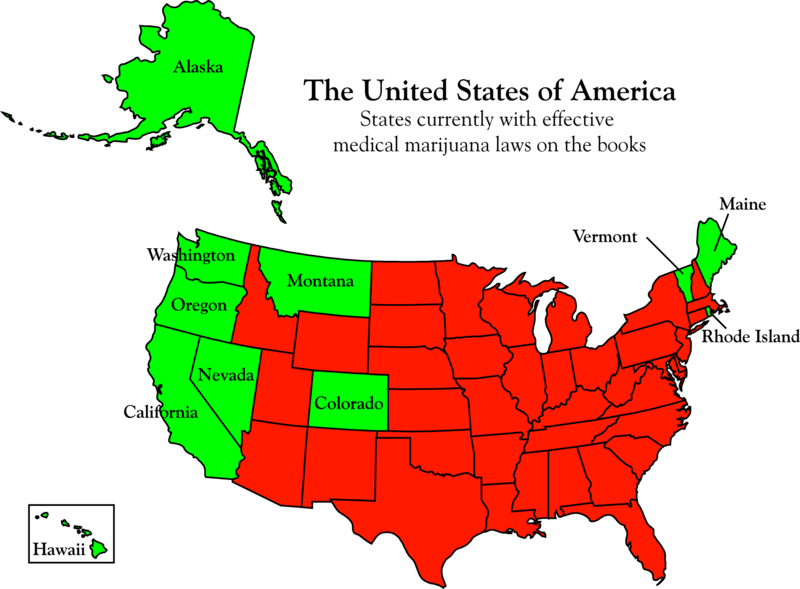America is inching closer toward legalizing marijuana every year. Medical marijuana has been legalized in 28 states, while 20 percent of the United States population now lives in a state with legalized recreational use. Despite uncertainty on the federal level, the legal marijuana industry is expected to grow at a rate of 27 percent per year through 2021. In 2016, consumer spending on the substance reached $6.7 billion in 2016.
In neighboring Colorado, sales and excise taxes on marijuana raked in $122 million in 2016, with $50 million flowing into school construction projects and additional revenues being used to fund scholarships at state post-secondary institutions. In Pueblo County, a two percent excise tax — which will eventually swell to five percent — is levied on locally grown marijuana, which is expected to contribute nearly $500,000 to scholarships for students to attend either a local two-year college or Colorado State University’s Pueblo campus.
Though Utah is far from Colorado’s position on cannabis, two major bills were considered during the 2017 legislative session to lift restraints on medical marijuana. Some Utah groups are pushing for a ballot initiative to legalize medical marijuana.
The first bill, S.B. 211, laid a framework for the regulation and sale of medical cannabis in the state of Utah. Sponsored by Sen. Evan Vickers, a pharmacist and University of Utah graduate from Cedar City, the bill would have required the legislature to take further steps in the future to “trigger” legalization. Though the bill implements stringent guidelines similar to FDA regulations, Sen. Vickers says that the bill “does not dictate any kind of a policy as to what is legal and what is not… It simply starts that process of allowing additional research to be done.” The bill died in the Senate after unanimously passing out of the Health and Human Services Committee.
H.B. 130, sponsored by Rep. Brad Daw from Orem, fared better. It passed out of the House unanimously before being signed into law by Gov. Gary Herbert on March 25. The bill permits research to go forward on cannabinoids while organizing a board to review issues regarding future cannabis policy.
Advocates for medical cannabis in Utah feel that the legislature is moving too slowly on the issue. Utah Residents for Medical Cannabis (URMC) is a group led by U student Gabby Saunders. The organization is planning a march on the Utah State Capitol on April 28. Saunders first worked as an activist bringing awareness to issues of domestic violence, but then she became ill with a gastrointestinal disorder called lymphocytic colitis and found medical cannabis as an alternative to prescription medications with a number of adverse side effects.
Saunders made it clear that her group has realistic views about the future of cannabis in Utah — they are not pushing for the legalization of recreational marijuana and they maintain an image that eschews graphic representations of “the leaf.” A request on the Facebook event page for the march reads, “Signs need to be respectful, and we would like to ask of you to not have the leaf on the signs or on your clothing.” URMC is working to achieve legalization of the drug they see as a solution to the woes of many illnesses.
Another group, Together for Responsible Use and Cannabis Education (TRUCE), has taken action into their own hands by beginning the process of making the legalization of medical cannabis a ballot initiative. Although it’s a costly process and takes thousands of signatures, if the group is successful, Utah residents will vote on the issue in 2018.
Though the two groups have not coordinated in the past, Saunders expressed a willingness to participate in the ballot initiative process. URMC hopes to collect signatures for the initiative and educate voters across the state while campaigning for cannabis legalization through other means.
One thing standing between medical cannabis advocacy groups and legalization is the research process. There are a number of cases of anecdotal evidence supporting the drug’s therapeutic qualities, but U professor of pharmacology and toxicology Glen Hanson says the science is still out on the safety and efficacy of medical cannabis.
Hanson, the former director of the National Institute on Drug Abuse (NIDA), has a more moderate outlook on the future of medical cannabis. While Hanson acknowledged that many patients have found relief in their use of a number of different forms of cannabis, he believes the drug should be held to higher standards before it’s legalized.
Pointing to the trial drug Rimonabant, an antiobesity medication that targeted cannabinoid receptors and had serious psychiatric side-effects including an elevated risk of suicide, Hanson emphatically proclaimed “Do the science!” He then discussed the negative effects of smoking any substance, noting parallels between marijuana and the commercialization and ensuing vilification of tobacco as the health risks were uncovered.
Hanson also elaborated on what he feels is a pattern of cultural acceptance of marijuana and subsequent increase in use among youth. He argues that legalization of even medical cannabis would lead to a more favorable perception of the drug by children and teens, which would lead to a greater number trying marijuana during a time that is crucial for brain development. Research has shown that usage during adolescence leads to permanent adverse cognitive effects. Although recent studies from states that have legalized cannabis have not yet shown an increase in use among juveniles, Hanson predicts that in time these numbers will go up.
While Hanson thinks it’s important that medical cannabis be subjected to the sort of FDA testing that other drugs receive, he doesn’t expect to see the funding materialize despite legislative advances. Advocacy groups tout the positive anecdotal effects of the drug and are looking for ways to cut through the red tape surrounding cannabis use. In conservative Utah, a state that values freedom and personal liberty, Saunders summed up her argument, saying that “patients should have the right to choose.”










